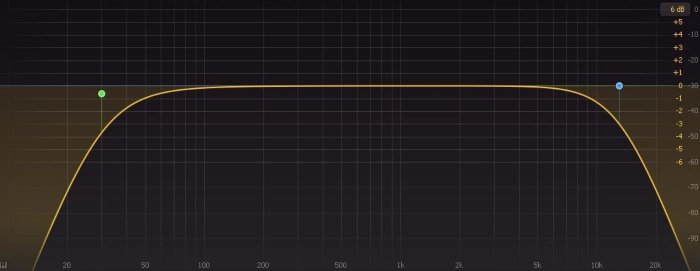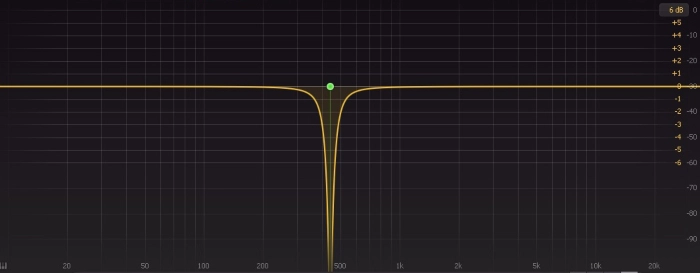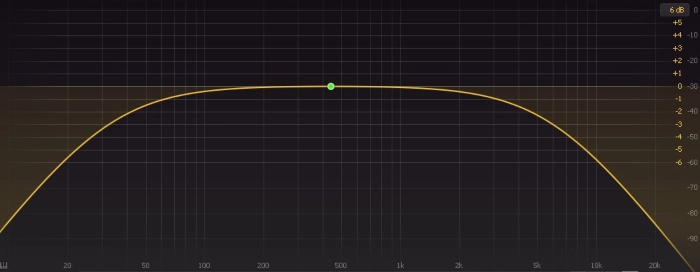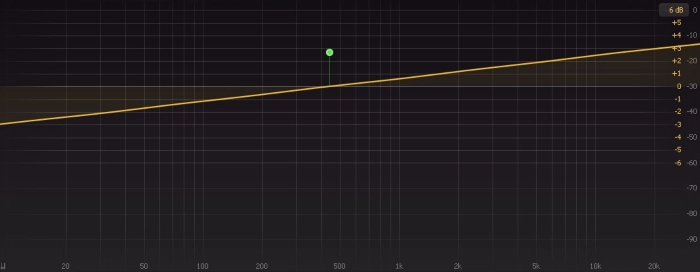EQ is the tool that can do magic for music. Without it, there would not be good-sounding songs and to use its power, you need to know how it works and understand what it does.
EQ has many different features and settings and one of them is EQ bands. There are different types of EQ bands that are used in different cases.
In this beginner’s guide, I will explain everything about EQ bands. After reading this post you will understand what type of EQ bands exist, how they work, and which one is the best to use in certain cases.
What Are EQ Bands?
First of all, before I dive in and explain each EQ band type it’s important to understand what is an EQ band and how it works.
An EQ band is a feature when you create a point on the frequency range that can have a different shape. You can choose any frequency on the spectrum and cut it or boost it. Also, you can make any EQ band as wide and as narrow as you wish.
Every EQ plugin has this feature and some plugins allow you to create unlimited EQ bands. But there are types of EQ that have limited bands such as 4-band EQ, 8-band EQ, etc.
Although you can shape an EQ band as you wish, there are different types of them and they are used for different cases.
Types Of EQ Bands
As I’ve said there are various EQ band types you can use and they all serve a purpose. Now let me dive deep and explain each type of band you may see in EQ plugins.
Low And High Cut

The first and perhaps the most used EQ bands are high and low-pass filters. Also called low cut and high cut. These are very handy tools for EQ and they are used on almost every track.
HPF and LPF are used to cut excessive high and low frequencies. These are frequencies that you don’t need to have in your mixes. Very low frequencies cause muddiness in the mix and very high frequencies have very harsh sounds.
So, to remove them you need to use low-cut and high-cut filters. Most modern EQ plugin has a dedicated option for HPF and LPF. You can learn how EQ pass filters work and get rid of unnecessary frequencies. EQ pass filters make mixes clean.
Low And High Shelf

The next EQ bands you can use are low and high shelves. These are also very handy tools when you mix songs and the shelf EQ band does the opposite of EQ pass filters.
Instead of cutting frequencies, EQ shelf bands boost frequencies – low shelf boosts low frequencies and high shelf boosts high frequencies. But you can do a lot more with EQ shelf bands.
You can choose any frequency spot you want, you can control dB, and also you can change the bandwidth of the EQ shelf band. These options give you more flexibility.
EQ shelves are great when you want to enhance a section of frequencies at once. For example, if you want to boost cymbals or hi-hat’s high frequencies, you can use the high shelf and enhance very high frequencies.
Bell EQ Band

Bell EQ band is the most commonly used type of band. Simply, it’s used to boost or cut desired frequency on the spectrum. When you create a new EQ band it’s a bell type by default.
This type of band is very useful for mixing electric guitars because you can cut or boost specific frequencies.
And it can be manipulated in any way. You can make it narrow or wider, change dB and you can create as many bell shape EQ bands as you want.
There is no specific case when the bell EQ band is used. It’s just a default EQ band that can enhance or cut any frequency you want.
In general, when using the bell EQ band, it’s recommended to use a narrow band for cutting and a wider band for boosting frequencies.
Notch

Notch is a very interesting type of EQ band and it can be very handy sometimes. It’s used only for cutting frequencies and is great for surgical EQ settings.
A notch EQ band can’t be used for boosting because it’s specific to removing frequencies. When you create this type of EQ band it completely cuts chosen frequency. You can make it very narrow or very wide.
This EQ band is used when you want to remove a very specific frequency. If your track has a frequency that sounds very bad, you can use a notch and completely remove it.
It’s a very handy tool but you should use it wisely. Try to not cut too many frequencies with a notch because it may ruin your track and make it unnatural.
Band Pass

The band-pass EQ band is a very interesting one. It does the opposite of a notch but also can be used as a filter. This is a very handy EQ band because it can make your work much easier.
The way it works is that when you create the band-pass EQ band it cuts every other frequency. But depending on its width it can do different things.
If you make it narrow, it works like a notch but the opposite. It only passes the chosen frequency though and will cut any other frequency.
But if you make it wider it becomes a high pass and low pass filter at the same time. And it can be great in some cases. Especially if you want to cut the same amount of high and low frequencies.
The band-pass EQ band comes in handy when you want a certain amount of frequencies to pass through or cut a specific amount of high and low frequencies.
Tilt Shelf

The tilt shelf combines both shelf EQ bands in one. You choose a point on the frequency spectrum and it will boost everything above and cut everything below. Or vice versa. You can control bandwidth and gain too.
This type of EQ band is not used frequently but it’s great for testing the sound. For example, you want to know how a specific instrument sounds when high frequencies are boosted but low frequencies are cut.
You can use a tilt-shelf for that. Also, you can do the opposite and cut high frequencies and boost low frequencies. You will understand the sound of the instrument and decision-making will become easier.
Flat Tilt

A flat tilt is the same as a tilt-shelf but as the name suggests it’s flat. Instead of a shelf-type EQ band, you have a flat EQ band. It has no bandwidth option.
For example, if you create a flat tilt EQ band at 700Hz, near frequencies will be less affected than frequencies far from it.
The purpose of the flat tilt is the same as the tilt-shelf. You can use both of them but at the end of the day, they both do the same thing. I personally very rarely use these types of EQ bands
Most Used EQ Bands
Although there are many different types of EQ bands, some are used more frequently than others. It’s important to know how EQ works, in general, to use bands properly.
The most used EQ band is a filter. HPF and LPF filters are used every time and almost on every track. I use them on every track. Because each instrument has unnecessary frequencies that require cutting.
Next, the most used type of EQ band is a bell. If you want to cut or boost a specific frequency you have to use a bell EQ band. It gives you the flexibility to manipulate it.
Also, low and high-shelf EQ bands are very common. Especially when you want to enhance very top frequencies. I rarely use shelf EQ bands for low frequencies.
Other types of EQ bands are optional and very specific. Sometimes you need that but most times standard EQ bands are enough. Tilt-type EQ bands are great for testing and a notch is great if you want to cut a very specific or narrow frequency section.
Conclusion
If you are a beginner and have very little understanding of how EQ works, this guide is a good starting point. Because before you start using EQ, it’s important to know what features it has and how they work. And EQ bands are one of the most important ones. So, understand what each EQ band does and it will make it easier to use EQ plugins on your tracks.
